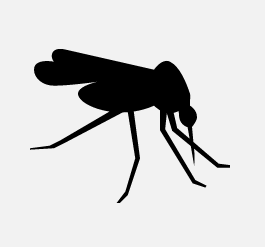Home or community-based programs for treating malaria prevent 42% of child deaths and result in prompt treatment being 8 times more likely.

Photo Credits: Unknown (L),
![]()
![]()
![]()
Why is home or community-based care important in malaria treatment?
Some of the barriers of effective treatment for malaria in many countries are the distance to health services and the cost of transportation. The cost of the artemsinin-based combination therapy itself is also a barrier but subsidized and reduced costs of treatment are not enough to improve access if people can get to the treatment. Home or community-based care is a strategy to address this barrier.
Home-based management of malaria is treatment of fever in children at or near their home (by mothers, health workers, drug sellers) with prepackaged antimalarial medicines with or without a malaria diagnosis.
Does home or community based care work?
- Home or community-based care increases the number of people who receive prompt treatment with an antimalarial (within 24 hours) when suffering fever. One study found that they reduced mortality.
- Home or community-based programs for treating malaria prevent 42% of child deaths and result in prompt treatment being 8 times more likely.
Equity: does it work in the disadvantaged?
- The greatest burden of malaria is among the disadvantaged. Improving time to treatment for malaria by providing treatment in the home or community and addressing barriers related to travel to health centres will improve malaria-related health outcomes for the disadvantaged.
Intervention Delivery
- The included interventions involved training of mothers or basic level health workers. 8 of the 10 studies treated malaria without a confirmed diagnosis while 2 studies trained community health workers (CHW) to use rapid diagnostic tests. The WHO now recommends confirmation of malaria before treatment to avoid overuse of antimalarials and rule out other causes of fever.
- Most of the interventions provided the antimalarial treatment for free or at a reduced cost.
- All studies included an educational component through community awareness, social marketing, or training of mothers and CHWs.
- Follow up ranged from 5 to 24 months.
Population and Setting
- The review utilized 10 studies conducted in low and middle income countries in Africa, including Burkina Faso, Democratic Republic of the Congo, Ethiopia, Kenya, Tanzania, Uganda, and Zambia.
Summary of Findings [SOF] Tables: Home- or community-based programs for treating malaria
Patient or population: children with fever or malaria symptoms
Settings: Malaria endemic areas
Intervention: home- or community-based
Comparison: standard care
| Outcomes |
| Anticipated absolute effects per year | Relative Effect (95% CI) | No of Participants (studies) | Quality of the evidence (GRADE) | ||||||||||||||||||||||||||||||||||||||||||||||||||||||||||||||||||
|
|
| Risk without home or community program (Control) | Risk difference with home or community programs (95% CI) |
|
|
| |||||||||||||||||||||||||||||||||||||||||||||||||||||||||||||||||
| All-cause mortality |
| 50 per 1000 | 21 fewer per 1000 (from 11 to 28 fewer) | OR 0.58 (0.49-69) | 13677 (1) | Moderate2,3 | |||||||||||||||||||||||||||||||||||||||||||||||||||||||||||||||||
| Prompt treatment with an effective antimalarial |
| 100 per 1000 | 369 more per 1000 (from 0 to 900 more) | OR 8.11 (6.40-10.27) | 3099 (2) | Moderate1 | |||||||||||||||||||||||||||||||||||||||||||||||||||||||||||||||||
| Adverse Events: None reported | |||||||||||||||||||||||||||||||||||||||||||||||||||||||||||||||||||||||
| 1. Downgraded by 1 for indirectness: all included studies treated children with clinical diagnosis of malaria without parasitological confirmation which is no longer recommended by the WHO and may lead to undertreatment of other illness which may need alternative treatments.
Summary of Findings [SOF] Tables: Home- or community-based programs using RDT diagnosis versus the same programs using clinical diagnosis Patient or population: children with fever or malaria symptoms
| |||||||||||||||||||||||||||||||||||||||||||||||||||||||||||||||||||||||
